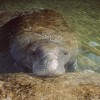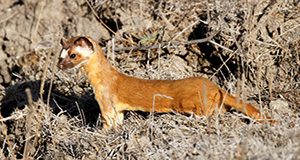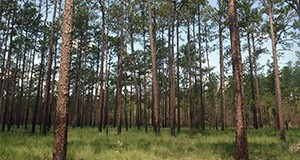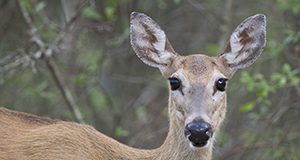Florida is home to several species of animals in Order Carnivora, a group of mammals with teeth adapted to allow them to eat meat. Many of them, like panthers, you probably know about, and some, like raccoons, you may see regularly. But did you know Florida hosts two separate species of foxes? Two different skunks? Weasels? This 20-page fact sheet written by Raoul Boughton, Bethany Wight, Elizabeth Pienaar, and Martin B. Main and published by the UF/IFAS Department of Wildlife Ecology and Conservation provides an overview of the mammalian carnivores of Florida from panthers to mink.
https://edis.ifas.ufl.edu/uw464
Tag: Elizabeth Pienaar
Landowner Cost-Share Incentives and Payments for Ecosystem Services: A Comparison of Key Program Features
Landowners who conduct land management activities that protect environmental benefits may be eligible for several types of financial assistance from the government, but not all incentive strategies are the same. This 4-page fact sheet written by Melissa M. Kreye, Elizabeth Pienaar, and Raoul K. Boughton and published by the Department of Wildlife Ecology and Conservation compares traditional cost-share programs offered to landowners through federal agencies and a new type of market-based incentive program called payments for ecosystem services (PES). The information inside can help private landowners understand the advantages and limitations of both approaches and guide decision-makers in designing effective future conservation incentive programs.
edis.ifas.ufl.edu/uw415
Using the Ecosystem Services Approach to Advance Conservation Efforts on Private Lands
Decision-makers in Florida have shown increased interest in using the Ecosystem Services (ES) approach to reward ecosystem conservation efforts on private lands. For example, payments for ecosystem services (PES) strategies have been effective in motivating landowners to conserve ecosystems on their land. Some landowners may find a better understanding of the ES approach to be useful when deciding to participate in a PES program. This 5-page fact sheet written by Melissa M. Kreye, Elizabeth Pienaar, Raoul K. Boughton, and Lindsey Wiggins and published by Department of Wildlife Ecology and Conservation will provide landowners, Extension agents, government and agency leaders, and other stakeholders with a better understanding of how ES are classified, the different ways ES can be valued, how quantifying ES values can help support conservation efforts on private lands in Florida, and a few of the challenges inherent in using the ES approach.
edis.ifas.ufl.edu/uw414
Measuring the Economic Value of the Environment and Natural Resources
 Conservation of natural resources requires investments of money, time, and effort by the government, businesses, landowners, conservation organizations, and the general public. Policies to conserve and manage natural resources should be based on a careful accounting of both the benefits and costs of conserving these resources. In a prior EDIS document, cost-benefit analysis and the role it plays in natural resources management and policy was discussed. This document extends that previous discussion by presenting more detailed information about how economists categorize the benefits of natural resources. This 4-page fact sheet was written by Elizabeth Pienaar, and published by the UF Department of Wildlife Ecology and Conservation, December 2014.
Conservation of natural resources requires investments of money, time, and effort by the government, businesses, landowners, conservation organizations, and the general public. Policies to conserve and manage natural resources should be based on a careful accounting of both the benefits and costs of conserving these resources. In a prior EDIS document, cost-benefit analysis and the role it plays in natural resources management and policy was discussed. This document extends that previous discussion by presenting more detailed information about how economists categorize the benefits of natural resources. This 4-page fact sheet was written by Elizabeth Pienaar, and published by the UF Department of Wildlife Ecology and Conservation, December 2014.
http://edis.ifas.ufl.edu/uw385


